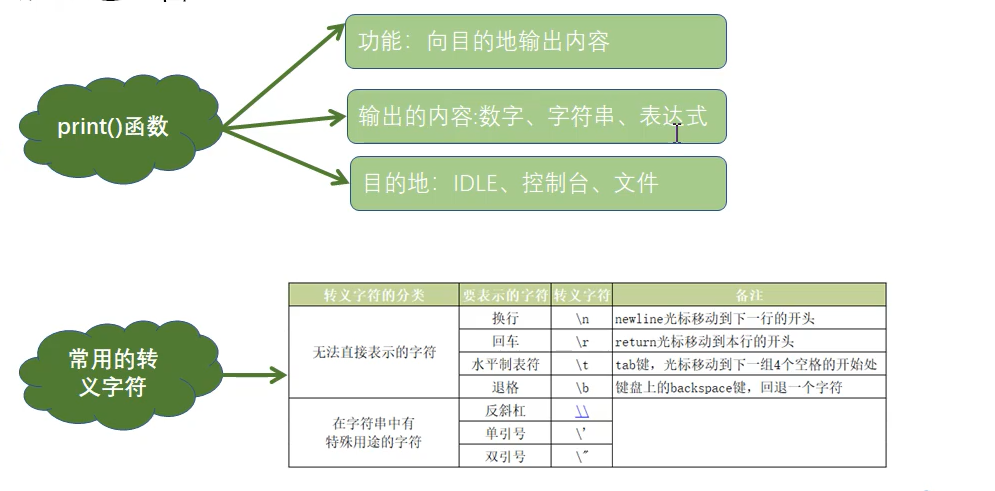学习python -- 第001天
一、输出函数的运用:
print()函数的使用
·print()函数可以输出哪些内容?
·(1)print)函数输出的内容可以是数字
·(2)print)函数输出的内容可以是字符串
·(3)print)函数输出的内容可以是含有运算符的表达式
·print()函数可以将内容输出的目的地
·(1)显示器
·(2)文件
·print()函数的输出形式
·(1)换行
·(2)不换行
实例代码:
1 # 2 # @author:浊浪 3 # @time: 2021/1/10 10:11 4 #输出数字 5 print(100) 6 print(98.5) 7 8 #输出字符串 9 print('helloworld') 10 print("helloworld") 11 print('''helloworld''') 12 13 #输出含有运算符的表达式 14 print(3+1) 15 16 17 #输出到文件上 18 fp = open('D:/text.txt', 'a+') #如果不存在就创建文件,a+表示在其后面添加 19 print('helloworld', file=fp) #需要指定文件名 20 fp.close() 21 ## 22 fp = open('text.txt', 'a+')#创建在当前文件夹 23 print('helloworld', file=fp) 24 fp.close() 25 26 #不换行输出 27 print('hello', 'world', 'Python')
二、转义字符
.开么是转义字符呢?
·就是反斜杠+想要实现的转义功能首字母。
·为什么需要转义字符?
·当字符串中包含反斜杠、单引号和双引号等有特殊用途的字符时,必须使用反斜杠对这些字符进行转义(转换一个含义)
反斜杠:\\
单引号:\'
双引号:\"
当字符串中包含换行、回车,水平制表符或退格等无法直接表示的特殊字符时,也可以使用转义字符当字符串中包含换行、回车,水平制表符或退格等无法直接表示的特殊字符时,也可以使用转义字符
换行:\n
回车:r
水平制表符:\t
退格:\b
实例代码:
1 # 2 # @author:浊浪 3 # @time: 2021/1/10 10:32 4 # 转移字符 5 print('hello\nworld') # n => newline的首字母 6 print('hello\tworld') 7 print('hellooo\tworld') # 制表字符 按4个作为一个制表符 满了就重开,没满就填满 8 print('hello\rworld') # return 移动到本行的开头 覆盖掉前面的字符串 9 print('hello\bworld') # 退格一个字符 10 11 print('https:\\\\www.baidu.com') 12 print('他会说:\'优美的中国话***\'') 13 14 # 原字符,不希望字符串中的转义字符起作用,就使用原字符,就是在字符串之前加上r,或R 15 print(r'hello\nworld') 16 #但是最后一个字符不能是单独的反斜杠 可以是双反斜杠 17 #这个会报错 : print(r'hello\nworld\') 18 print(r'hello\nworld\\')

认清现实,放弃幻想。
细节决定成败,心态放好,认真学习与工作。


